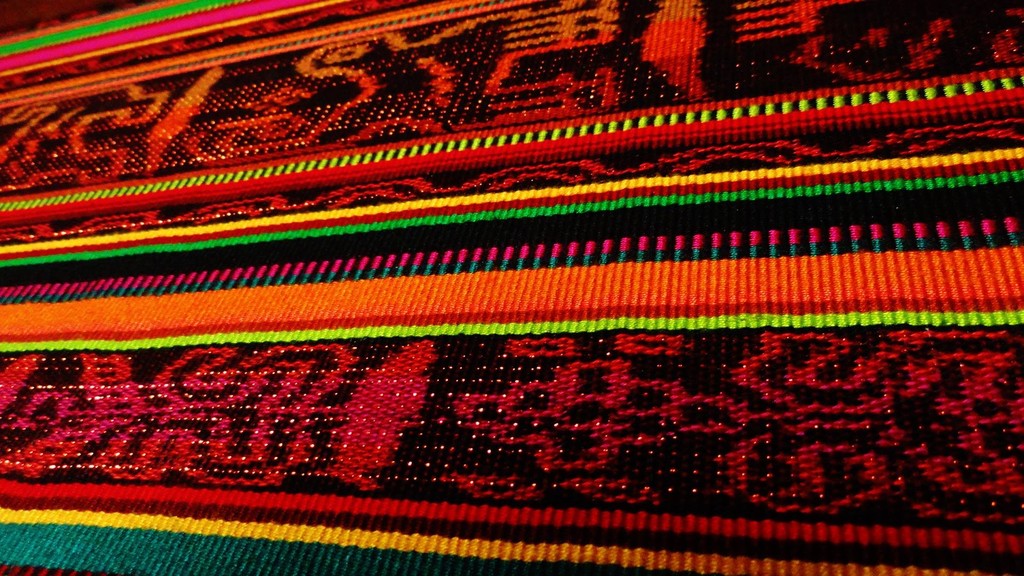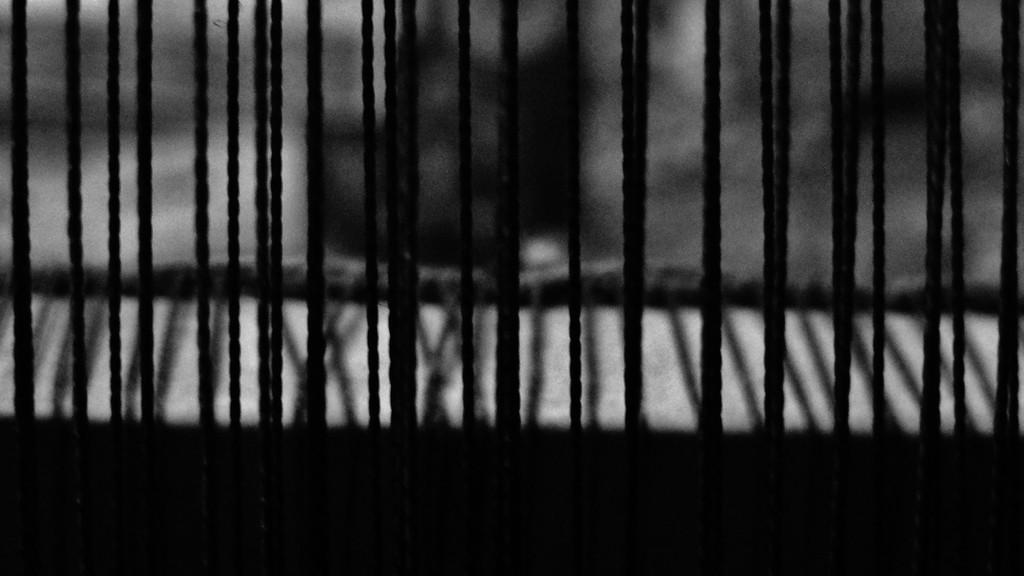Traditional Mayan skirts in Guatemala
How traditional Mayan skirts are handcrafted in Paxtocá, Guatemala.

Simply reading a blog is no match for a hands-on experience, which is why I invite you to pack your suitcase and come and discover Paxtocá, a small village in Guatamala. Today, I'd like to tell you a little bit about how the long, wrap-around skirts traditionally worn by Mayan women known as 'cortes' are handcrafted in Paxtocá (they can be up to 6 metres long!). The process can vary, depending on the type of skirt and the material, so I'm just going to explain the basics, taught to me by an artisan weaver.
Before I start, though, I have to admit there are some terms I'm going to use in this blog, based on specific local words, that are difficult to explain! So I'll try to find the best words I can, in an attempt to provide as close a description as possible, because I'd like this to serve as a kind of reference material for anyone who wants to learn about this fantastic process.
To start handcrafting traditional Mayan skirts, you will need: 1. A spooling apparatus. 2. Wooden or metal bobbins. 3. A warping machine with a warp beam, which will determine the skirt's length and width. 4. A wooden square or cube-shaped structure, designed to bear the weight and strength of an adult, called a treadle (or foot) loom, which is used to weave the skirt. 5. Wooden shuttles, which pass back and forth across the loom.
The first important step in this creative process is to decide what kind of skirt you want to make which will affect, for example, what materials you will use. I should reiterate that based on the kind of skirt you choose the process can vary, but the basics, which I'm about to go through, generally remain the same.
First, you have to buy your raw materials, which in this case are threads. They come in all kinds of different colours, but the most commonly-used are black and red. White threads are generally used to create patterns that will give the traditional skirts a distinctive design. Next comes the wooden spooling apparatus. You take a black or red thread and place it over a revolving section of the apparatus known as a 'cañon'. You then place a wooden or metal bobbin on a small rod (30cm long and about as thick as your thumb), and turn a handle to make the apparatus spin, to spool the required amount of thread onto the bobbin. You may need to make between 60 to 100 bobbins of thread, depending on how long you want to make the skirt. When they're all ready to go, you'll need to line up the ends of the bobbins on a kind of wooden bench known as a warp sheet, so they can be joined together to create a continuous sheet of individual warp threads.
Once you have your individual warp threads you're ready to carry out an activity known as warping, which aims to create one long, thick thread. To do this, you'll be using a tool which consists of a long beam, known as a warp beam, with two circular wooden instruments either side, known as flanges. The thread is first wound around a flange (2m long with a diameter of 20cm), which has symmetrical grooves around its circumference. This will determine the width of the skirt, which can be one metre or larger, your choice. Warping is a four-person process; you need one person to hold the flange, another person to hold the thread, which is traditionally wound around your waist, and two people to turn the warp beam. All this can take up to three hours, depending on the length of the thread!
With the thread wrapped around the warp beam, the next step is to transfer the ends of the thread rolled around the warp beam to the loom, in a process very similar to what the Mayans used to carry out. You'll need to separate the thread into two directions, one horizontal and one vertical, to create a criss-cross pattern. The idea is that the loom will hold the threads tight to allow the horizontal (or weft) threads to be woven easily back and forth, over and under the vertical ones. The wooden shuttles will be used to pass in between the threads and press them into position.

As I'm sure you can tell by now, the process of setting up the thread in the loom and weaving the thread is a complicated one!
And don't forget to create a beautiful design! Traditional Mayan skirts boast creative shapes and patterns. You'll need to spool the white thread onto a bobbin using a wooden winder, to make the threads thicker (you can create threads with a thickness of 5 to 21 cords). Once the thread is about one metre wide, with around 12 cords, you'll want to fix the thread and start to create a pattern by tying knots.

From 10 to 16 knots can be tied along each row, depending on the creativity and specialty of each artisan weaver. During this step it's important to think carefully about your overall design, because the white thread can be dyed to create any other colour you want. If you want to add other patterns, you'll need to leave spaces! Once the dyed thread has dried, it is stretched out and you can start the knot-tying process over again to embellish your design. Once you're happy, you'll need to dye the thread black, leave it to dry once more, and then untie the knots to reveal your colourful, patterned thread!
Your multicoloured thread will then be spooled onto a wooden bobbin (10cm long, with a diameter of just 1cm) using a winder. You can also buy silk threads, which come in plastic cones, in a variety of different colors.
Once your materials are prepared, you're ready to weave the multicoloured and silk threads horizontally over and under the vertical threads. Your traditional Mayan skirts will then really start to take shape!

All in all, this is a very difficult process to explain! The terms used by the artisan weavers are specific to each village, and the processes vary as each region has its own unique style and crafting process for these traditional long skirts, depending on fashions, the climate, customs and local activities. Sadly, this craft is slowly disappearing, because of the globalisation of the clothing industry, meaning these traditional production methods are not profitable for producers. So, the best thing you can do right now is organise a visit to these artisan weavers and experience this incredible artistic process for yourself!
Photo gallery
Content available in other languages
- Español: Cortes Típicos en Paxtocá
Want to have your own Erasmus blog?
If you are experiencing living abroad, you're an avid traveller or want to promote the city where you live... create your own blog and share your adventures!
I want to create my Erasmus blog! →







Comments (0 comments)